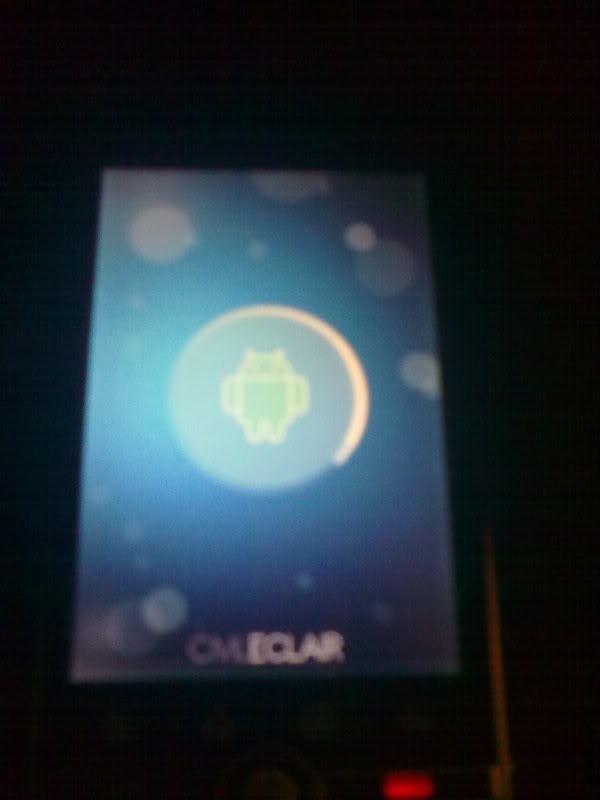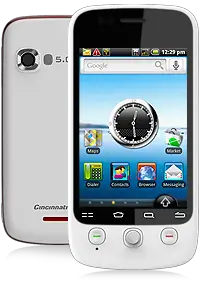"The Chinese mobile phone market is the largest in the world. According to China's Ministry of Industry and Information Technology (MIIT), there were 756.6 million mobile subscribers as of the end of January 2010. And with this many mobile users out there, the competition can get pretty fierce.
Three major mobile carriers battle it out for market dominance-China Mobile, China Unicom and China Telecom. Backed by the Chinese government, China Mobile holds a significant lead and has chosen the TD-SCDMA protocol for 3G services. China Unicom is going with the W-CDMA/UMTS protocol for their 3G services, while China Telecom uses CDMA2000.
Then there are the phones themselves. More handsets are produced in China than in any other country in the world. Market Avenue's "2010 Report on China's Mobile-Phone Chip (MPC) Market," China produced over 750 million mobile phones in 2008. What does that mean for the Chinese consumer? Choice. The market is flooded with major international brands, Chinese brands and of course knock-off phones (sometimes referred to as "Shanzhai" phones).
International phones include the popular iPhone and BlackBerry and along with those, Nokia, Samsung and Motorola all sell to the Chinese market, with Nokia still the sales leader in China. Not resting on their laurels in this unique and very large market, international brands have stepped-up with custom offerings destined to start out in the Chinese market. Nokia, Samsung and now Motorola are currently producing phone models exclusively for China.

With the wealth of experience that Chinese manufacturers have, it makes sense that Chinese-branded phones are getting better. The likes of Huawei, Lenovo and ZTE are recognized around the world, but other successful manufacturers sell to the Chinese market. Some of these manufacturers have started to push their phones specifically to other countries in the developing world as the potential sales for lower end phones are large. India in particular is one of the more lucrative target markets.
And then there are the infamous grey market phones. These manufacturers use alternative parts to create clones of more popular phones, with the iPhone being the number one target. Some of these phones are actually branded with a duplicate of the popular brand, while others carry the brand of the manufacturer. Knock-offs will probably be a part of the Chinese market for some time, but some of these manufacturers have made the leap from gray market to legitimate brand names
UBM TechInsights has produced
a report on the Chinese handset market examining 15 phones from different manufacturers-12 of them coming from Chinese companies. Through this report, UBM TechInsights aims to give an overall impression of what these companies are doing to address the large and diverse Chinese mobile market. The Apanda A60 is one of the first phones we examined for this report.
Apanda A60
One of the Chinese brands looking to capture a greater piece of the smart phone market is newcomer Apanda. Apanda has set its sights high with its release of the A60, an aggressively priced Android-based smart phone they hope to sell worldwide, including the American and European markets.
The A60 has all the bells and whistles we would expect from a smart phone from one of the major suppliers and follows the basic iPhone form-factor. The large 3.2-inch HVGA capacitive touchscreen is the main user interface, with the addition of a few buttons and a trackball below. Additional wireless features on this phone include Wi-Fi, Bluetooth and GPS capabilities. 256 Mbytes of RAM combined with a 600-MHz processor provide processing speed, while 512 Mbytes of flash makes up the on phone storage. A five megapixel camera and high-definition audio playback, round out the list of available features.
Similar to another Android-based phone that was recently introduced, the Apanda A60 looks to benefit from the surging popularity of the Android operating system. Technology blog MobileCrunch reported that the number of Android apps is now more than 30,000 as of March 16th-and growing fast. Despite the current dispute between Google and China, Android-based phones are very popular in China. China-based phones that have an Android include models from Lenovo, ZTE and Huawei.

Teardown
Baseband processor veteran Qualcomm powers this phone with the relatively new Qualcomm MSM7227 baseband processor. This processor was sampling in February of 2009 and is aimed at the lower end of the smart phone market. Qualcomm has managed to keep the size and power consumption down while increasing processor speed and adding functionality. The MSM7227 maintains the same footprint as the previous MSM7xxx processors and utilizes all the same software.
Other Qualcomm devices help provide the silicon backbone for this smart phone with the RTR6285 providing the wireless transceivers and the PM7540 managing the power for the device. The RTR6285 and PM7540 have long been associated with the MSM7xxx series processors, therefore inter-device communication and drivers will be well established for this set of parts. This helps keep the cost down with more potential for software reuse.
The RTR6285 contains transceiver circuitry for the W-CDMA (UMTS) bands for North America, Japan, China, and Europe, as well as four GSM/EDGE bands (800/900/1800/1900 MHz).
Skyworks provides the power amplifiers. The SKY77187 amplifies the W-CDMA/UMTS bands while the SKY77336 takes care of the quad band GSM.
Hynix gets the design win on the memory side with a multichip package that includes both the RAM and flash memory. Based on what we have seen in the past, the package likely contains a Numonyx NAND flash die along with a Hynix Mobile DDR SDRAM die.
Secondary wireless interfaces include Bluetooth and Wi-Fi, and in this phone these two functions are combined into one module from USI. Cracking open the lid of the module we find another design win for Qualcomm with their BTS4025 single-chip Bluetooth device. The Atheros AR6002GZ single-chip Wi-Fi device also resides in the module-not a surprise considering Atheros' long-standing partnership with Qualcomm in the Wi-Fi domain.
On the GPS side of things, Avago supplies the low-noise amplifier and FBAR filters for the GPS combined in the ALM-1712 device.
In the final set of design wins, the USB interface is handled by the Analogic Tech AAT1275, an ELAN EKPT1051 controls the capacitive touchscreen and the 5-megapixel camera is powered by the OmniVision OV5642 CMOS image sensor.
Overall, the Apanda A60 is a feature-rich smart phone that aims to compete with the major players by adopting the open-source Android operating system and keeping the price as low as possible. It will be interesting to see if the relatively unknown Apanda is able to crack these tough international markets. Whether Apanda succeeds in markets outside China or not, they almost certainly won't be the last Chinese mobile phone company to try. p
Steve Bittonis a product manager in the Technical Intelligence group at
UBM TechInsights. Steve is responsible for teardowns, system analysis, market research and product marketing. He has a bachelor's of applied science in electrical engineering from Queen's University."
from:
embeddedinternetdesign by Steve Bitton


































